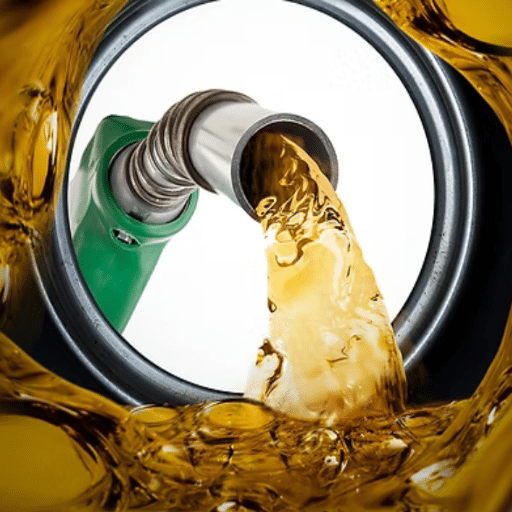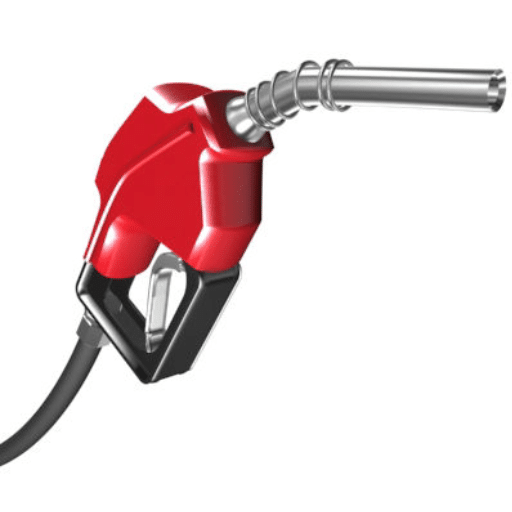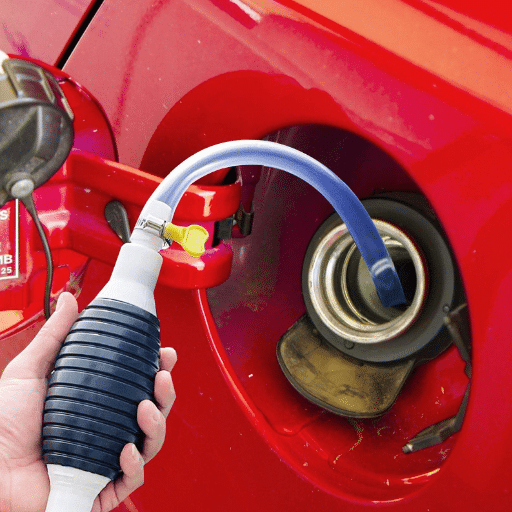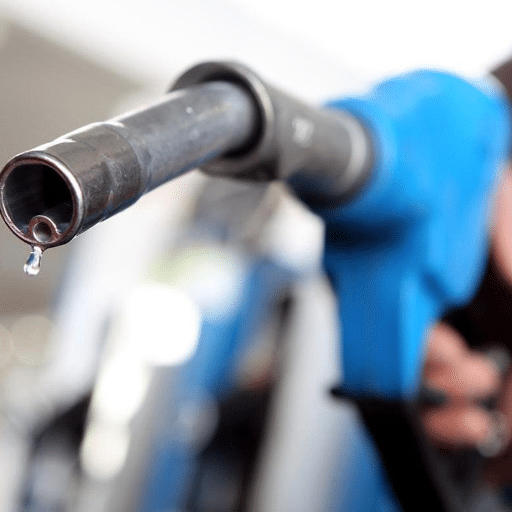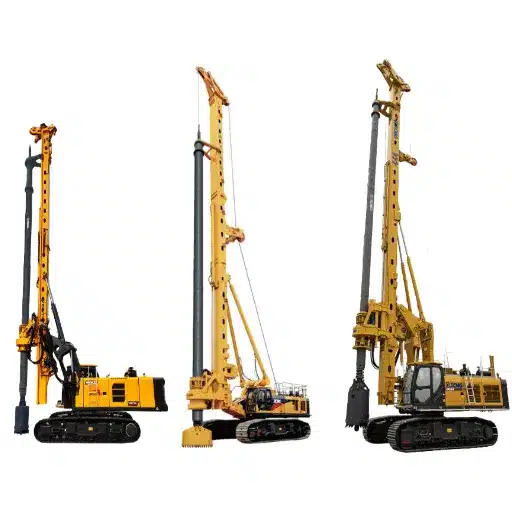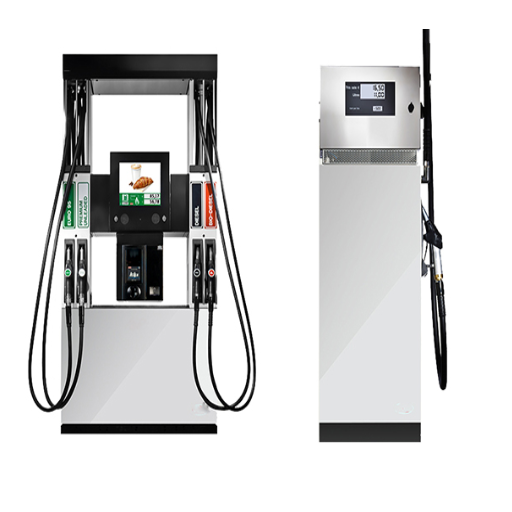Among alternative fuels, LPG and CNG are a duo that has transformed the energy scenario. They are touted as cleaner and, also, more economical alternatives to petroleum and diesel fuels. Therefore, learning what makes them different is crucial for making informed decisions. Whether you want to apply the fuels to vehicle use, home heating, or industrial uses, knowing their distinctions will help you evaluate which one serves your purpose better. This blog examines the differences between LPG and CNG, illuminating their composition, applications, advantages, and environmental implications. So, gear up to learn about the main features of these fuels, understand what differentiates them, and how they pave the way toward sustainability.
Introduction to LPG and CNG
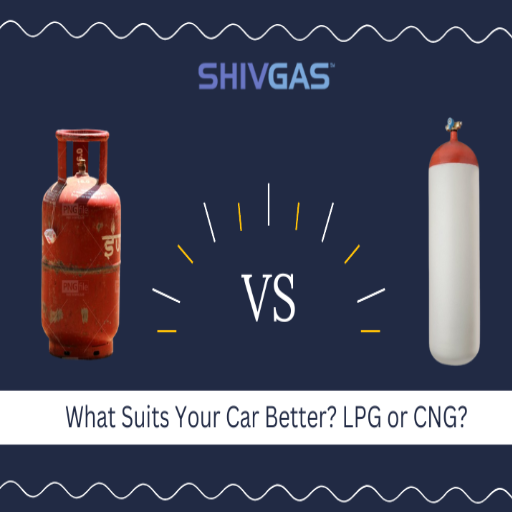
The two widely used fuel types differ in properties and sources: LPG and CNG. LPG is composed mainly of propane and butane and can be stored as liquids under moderate pressure. Using LPG for culinary purposes or heating, LPG can also be used as a vehicular fuel. CNG, by comparison, is mostly methane stored in a fully compressed form. It finds its primary applications in the green transportation industry and industrial energy. Both offer efficient and environmentally friendly alternatives to traditional petroleum-derived fuels, with CNG boasting a reputation for reducing carbon emissions.
Definition of LPG
LPG, or Liquefied Petroleum Gas, is a more versatile energy source and results from either crude oil refining or natural gas processing. Being primarily a mix of propane and butane, gases are liquefied under pressure to facilitate storage and transportation. This particular energy resource is widely used in residential, commercial, and industrial settings. For example, approximately 48 percent of LPG consumption is for cooking and water heating in homes, offering a cleaner fuel option compared to conventional types of wood and coal.
LPG is appreciated for its energy efficiency and cleanliness. It generates 81 percent less particulate matter than coal and much less CO₂ than oil-fueled sources. Its portability, which allows for easy storage in bulk, ensures that LPG is an indispensable energy source for any remote or off-grid activity, regardless of its size. Recent estimates suggest that the global LPG market size reached approximately $131 billion in 2022 and is expected to continue growing, driven by rising urbanization and increasing demand for cleaner energy alternatives in developing nations.
Definition of CNG
CNG plays the methanolic role in this substitutive set with petrol, diesel, and propane-based fuels. Being a high-pressure gas, it enjoys a softer image as a green fuel compared to gasoline and diesel. Lesser pollutants are produced as CNG generates a minimal amount of carbon dioxide (CO2), carbon monoxide (CO), and nitrogen oxides (NOx), making it a good option for reducing vehicle emissions and promoting sustainable energy use.
According to industry research, the global market for CNG stood at approximately $2.4 billion in 2022 and is projected to grow at a compound annual growth rate (CAGR) of around 6-8 percent in the coming years. Increasing investments in infrastructure, such as CNG fueling stations, in countries like India, Pakistan, and Brazil to support the use of CNG are among the reasons behind the demand growth. Almost the exact location offers affordable prices, and it is available almost everywhere.
Other transportation activities include the increasing availability of a cleaner environment in urban areas through CNG-powered bus and taxi services. Serving as a primary practical and effective energy solution in the world’s effort to reduce greenhouse gases, CNG finds itself in the spotlight.
Common Uses of LPG and CNG
LPG (Liquefied Petroleum Gas) and CNG (Compressed Natural Gas) are two of the most versatile energy sources that industrial sectors across the globe heavily rely upon.
1. Application in the Home: In many countries, LPG is primarily used for cooking and heating due to its convenience and efficiency as an energy source. Millions of families, especially in developing regions, view LPG as a clean cooking fuel and are slowly transitioning away from using traditional biomass. Recent CNG projects are now promoting this gas for both home heating and small domestic generators.
2. Transportation Sector: Both LPG and CNG are found to be alternatives to gasoline and diesel for vehicles. LPG is used in autogas systems and is very popular in countries such as Turkey, South Korea, and Italy, with millions of cars running on it. Conversely, CNG is widely used in public transport due to its lower carbon emissions compared to fuel buses, taxis, and private cars. The most recent data indicate that CNG-powered vehicles significantly reduce tailpipe emissions, thereby improving air quality in urban areas.
3. Industrial Applications: LPG is a vital energy source for industrial applications, including metal cutting, glass manufacturing, and industrial boiler firing. LPG provides consistent heat output, making it preferable for different high-energy industrial processes. Meanwhile, in industries, CNG powers machinery and turbines. CNG is preferred by industries mainly for its low cost and, sometimes, due to reduced maintenance requirements compared to traditional fossil fuels.
4. Agriculture: LPG is used in agriculture for crop drying, water pumping, and greenhouse heating. It is a dependable energy solution for farmers, enabling them to carry out more efficient and environmentally friendly operations. CNG is also emerging as an alternative energy source for agricultural machinery, offering a cleaner option to diesel.
5. Power Generation: Both LPG and CNG play a crucial role in power generation, particularly in areas where off-grid energy is required. LPG-fueled generators, while CNG with low emission profiles, are widely accepted for providing backup power supplies to residential, commercial, and industrial establishments and are increasingly included in small to large power plants. In a low-carbon transition scenario, a greater spread of LPG and CNG applications is established across various sectors to mitigate energy demand while maintaining environmental sustainability.
Understanding the Differences
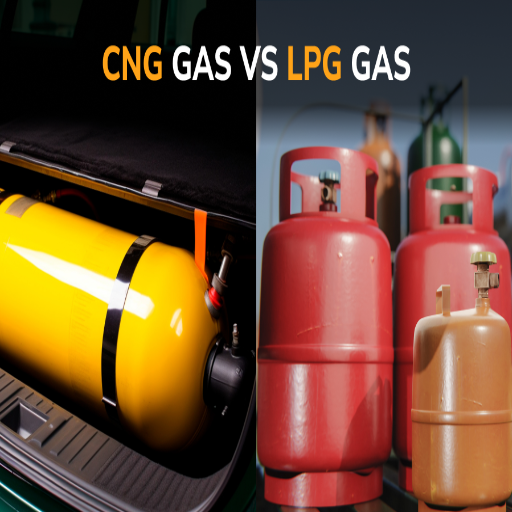
LPG (Liquefied Petroleum Gas) and CNG (Compressed Natural Gas) differ chiefly in composition, storage, and applications. LPG is typically obtained from refining crude oil or processing natural gas and is primarily composed of propane and butane. It is stored as a liquid under high pressure and has applications in heating, cooking, and transportation.
CNG, in contrast, is mainly comprised of methane and is stored as a compressed gas. CNG and power generation are the primary end-user industries, the former benefiting from low emissions. CNG and LPG usage are considered less polluting; however, CNG is comparatively environmentally friendly due to its low carbon emissions.
LPG vs CNG: Composition and Properties
Since LPG generally consists of propane and butane, these hydrocarbons are derived during the different stages of natural gas processing and crude oil refining. The gas is liquefied under moderate pressure and is widely used because of its portability and high energy density. LPG has an energy density of approximately 25.5 MJ/L and is highly efficient for domestic heating, cooking, and various industrial applications.CNG, in contrast, is primarily composed of methane (CH4) extracted from natural gas fields. It is stored as a gas under high pressure (about 200 to 250 bars). It has an energy density of approximately 9 MJ/L, which is lower than that of LPG but compensates for this by being a cleaner-burning fuel with reduced emissions of carbon dioxide, nitrogen oxides, and particulate matter.
Depending on the properties, some differences may be noticed in specific gravity. LPG is heavier than air. Therefore, when leaked, it tends to accumulate in low-lying areas, which enhances the possibility of a fire hazard. CNG, being lighter than air, disperses quickly into the atmosphere and is thus significantly safer in the event of any leak. Lastly, more economical LPG caters to many more applications than CNG, which is suitable for a few specific applications, such as transport and power generation, due to its less environmentally friendly and cost-effective nature.
The two fuel kinds play distinct roles in the energy sector, offering cleaner alternatives to conventional fossil fuels. CNG usually stands further ahead in the greenhouse gas emission drawback because of its simpler chemical composition and less carbon output. For instance, one unit of carbon dioxide is emitted 20% less in NGC than in LPG, which is drawing attention from environmentally conscious industries and transportation systems.
Difference between LPG and CNG: Storage and Distribution
LPG is stored in liquid form under moderate pressure, while CNG is stored in gaseous form under high pressure; both require specific tanks for safe distribution.
|
Key Point |
LPG |
CNG |
|---|---|---|
|
Form |
Liquid |
Gas |
|
Pressure |
Moderate |
High |
|
Tanks |
Cylindrical |
Spherical |
|
Safety |
Pressure-safe valves |
High resistance |
|
Transport |
Easier |
Challenging |
CNG Cylinder vs LPG Cylinder
When comparing CNG and LPG cylinders, significant differences exist in terms of design, composition, applications, and safety measures. These differences stem from the distinct physical and chemical properties of the gases they store.
|
Aspect |
CNG Cylinder |
LPG Cylinder |
|---|---|---|
|
Material |
Typically made from high-strength steel or composite materials to withstand high pressure. |
Made from steel or aluminum, designed for moderate pressure |
|
Pressure Range |
Operates at very high pressures, typically around 200-250 bar |
Operates at lower pressures, typically around 5-15 bar |
|
Shape |
Generally cylindrical with a robust structure to handle extreme internal pressure |
Cylindrical or slightly rounded design for portability and ease of use |
|
Weight |
Heavier due to higher pressure requirements and reinforced structure |
Comparatively lighter and easier to handle |
|
Safety Features |
Equipped with pressure relief devices and reinforced valves to handle high-energy gas |
Safety valves to prevent leaks and moderate pressure controls |
|
Applications |
Primarily used in vehicles for long-distance travel and industrial purposes. |
Commonly used for household cooking, heating, and portable energy needs |
|
Capacity |
Smaller energy density, requiring larger or more cylinders |
Higher energy density, providing more energy storage in smaller volumes |
|
Cost |
Higher manufacturing costs due to advanced materials and pressure tolerance |
Lower cost, focusing on ease of production and widespread distribution |
While CNG cylinders are designed to store gas in its compressed form at very high pressures, making them suitable for automotive and industrial applications, LPG cylinders are crafted with household convenience and broader accessibility in mind. Both types of cylinders adhere to strict safety standards and specifications to ensure secure handling and storage under their respective conditions.
Environmental Impact of LPG and CNG
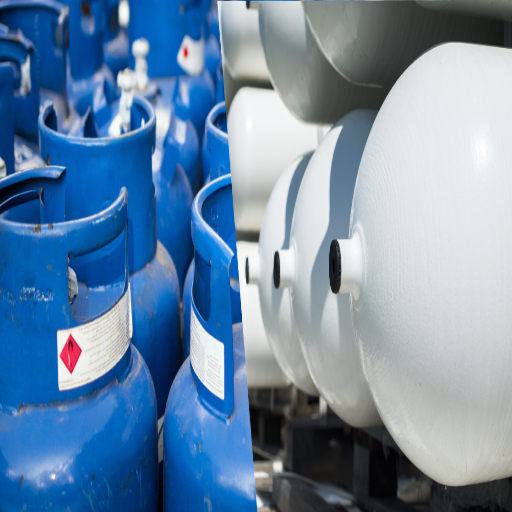
In general, LPG and CNG are considered cleaner alternatives compared to more traditional fossil fuels, such as coal and gasoline. LPG emits fewer greenhouse gases than coal and is more energy-efficient, thus theoretically making it a cleaner fuel for the domestic and industrial sectors. CNG, on the other hand, has a much cleaner burn than LPG and emits less carbon dioxide, particulate matter, and other carcinogenic pollutants, which is highly beneficial for curbing air pollution in cities. Although both help reduce environmental encumbrances compared to conventional fuels, in most of its vehicular applications, CNG is generally regarded as the greener of the two.
Combustion Emissions of LPG
Liquefied Petroleum Gas, or LPG, is considered a more environmentally friendly option in many respects compared to traditional fuels, as it produces fewer emissions upon combustion. The combustion of LPG primarily forms carbon dioxide and water vapor, with minute quantities of particulate matter, nitrogen oxides, and sulfur oxides. According to research, it was determined that burning LPG produced about 20% less CO2 compared to diesel and petrol, hence making it environmentally friendlier for various applications.
Additionally, LPG has virtually no black carbon, the primary agent responsible for global warming and air pollution, which is emitted by solid fuels such as coal and wood. It can reduce particulate emissions by up to 90% when used for heating or cooking compared to traditional biomass fuels. With such a clean combustion profile, it nonetheless helps improve air quality, whether indoors or outdoors, especially in urban areas. Thus, LPG emerges as a front-runner, capable of spurring clean-fuel solutions that commensurately alleviate health risks caused by air pollution.
Environmental Impact of CNG
Compressed Natural Gas, or CNG in short, is typically considered cleaner than fossil fuels, such as gasoline or diesel. Its combustion produces fewer harmful emissions, leading to a decrease in air pollution and an improvement in air quality. For example, CNG emits particulates 80 to 90% less and carbon monoxide about 70% less than those from traditional fuels. CNG, on average, emits 20-30% fewer greenhouse gases, making it a viable option for mitigating climate change.
It is an added advantage that CNG reduces NOx emissions by approximately 50%, which is of crucial importance in combating smog formation, especially in urban areas. Unlike coal or oil-based fuels, the combustion of CNG does not produce harmful by-products such as SO2. CNG infrastructure can also be established by utilizing existing natural gas pipelines, thereby significantly reducing the environmental disturbance associated with the transportation and processing of other fuels. Apart from these advantages, it’s essential to consider that CNG is still a fossil fuel and is cleaner only to some extent but not truly carbon-free. Achieving long-term sustainability goals requires transitioning to renewable energy sources.
Comparative Analysis: LPG and CNG
LPG and CNG have been widely recognized as alternative fuels, with their advantages and disadvantages serving as distinguishing traits.
Composition and Availability: LPG is primarily composed of propane and butane, whereas CNG is predominantly composed of methane. LPG often finds itself as a by-product of either oil refining or natural gas processing, thereby making it widely available. On the other hand, CNG’s distribution relies on a well-developed network of pipelines and compression stations that directly derive from natural gas.
Energy Efficiency: In terms of energy density, LPG is denser than CNG and, therefore, provides more energy for a given volume of gas, theoretically resulting in better fuel efficiency for vehicles and equipment operating on LPG. On the contrary, CNG’s low gaseous density has implications that require enormous storage tanks to offer an adequate, practical range.
Environmental Impact: Both fuels have enjoyed a reputation as clean alternatives to gasoline and diesel. CNG sets the example by emitting comparatively lower greenhouse gases due to its methane composition. At the same time, LPG does so at a somewhat higher level, yet in a manner that can be considered cleaner than its conventional counterparts.
Safety: Being lighter than air, CNG disperses quickly in the event of a leak, reducing the risk of explosion in a well-ventilated area. This is in contrast to LPG, which, being heavier than air, can collect in low-lying areas, creating a hazardous environment. Stringent safety measures must be implemented for both types of fuel during handling and storage.
Applications: With a significant cost advantage over CNG and an infrastructure support system in place, CNG is primarily used in public transportation systems and various fleet services. LPG, on the other hand, has multiple uses, ranging from heating and cooking within homes to powering vehicles in areas where CNG is unavailable.
Both fuels mark a series of advantages over traditional fossil fuels, but their appropriateness depends on factors such as infrastructure, availability, and respective energy requirements.
Fuel Efficiency and Performance
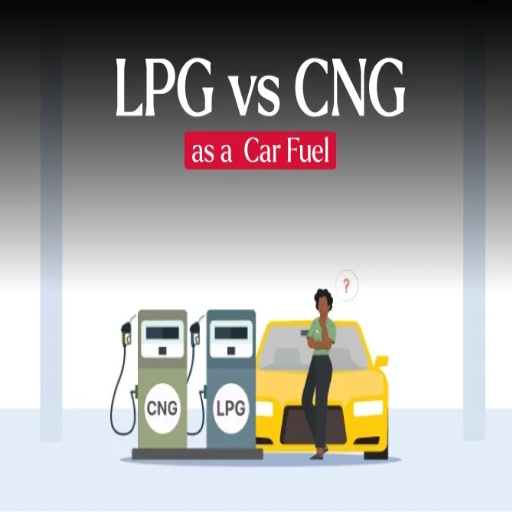
Enhanced fuel efficiency for CNG and LPG is a common selling point compared to ordinary gasoline or diesel. Given the choice, one would generally consider CNG to be higher on the mileage scale per given volume, rendering it a cost-effective alternative for extended use in areas with good refueling infrastructure. LPG tends to burn cleaner than gasoline and refuels promptly, making it advantageous for vehicles in areas where CNG availability is low. While both improve engine performance by reducing polluting emissions, the choice between the two is chiefly governed by vehicle-specific needs and associated network access.
CNG Vehicles: Performance Insights
Compressed Natural Gas (CNG) vehicles are increasingly adopting the term due to their performance and environmental benefits. With modern CNG engines, achieving both excellent efficiency and very low carbon emissions was a simultaneous goal. Recent statistics suggest that CNG vehicles generate 90% less carbon monoxide emissions, while for greenhouse gases, the figure stands at 25% less than those of gasoline or diesel engines.
Moreover, CNG stands tall with an octane number of about 120-130. This enables engines to work under a high compression ratio, creating a situation that also improves thermal efficiency. The result is an improvement in engine power and a reduction in carbon deposits within the engine, thereby extending the engine’s lifespan through clean combustion. Following this, further developments in CNG storage technology have also contributed to increasing fuel tank capacity, enabling vehicles to cover longer routes with a single fill-up.
Conversely, another significant price advantage of CNG remains. The CNG per-mile price is consistently lower than that of gasoline or diesel, especially in areas with established refueling infrastructure. For instance, fleet operators have achieved a 40% reduction in fuel costs after several years of using CNG-powered vehicles. All these make CNG that much closer to the consumer and economically viable.
Advantages of LPG as a Fuel
Liquefied Petroleum Gas (LPG) is accepted for its versatility and clean combustion, making it broadly acceptable for refueling residential and sometimes commercial vehicles. One significant advantage of LPG is its less impact on the environment. When burning LPG, fewer greenhouse gases are emitted into the atmosphere compared to gasoline and diesel, resulting in less air pollution and a smaller carbon footprint. For example, LPG vehicles produce around 20 percent less CO2 than petrol vehicles.
From an economic perspective, LPG is reasonably cost-effective, and in many parts of the world, its prices are lower than those of traditional fuels. Having a higher energy content per unit volume further enhances the utility value, as customers may be able to derive more mileage from this fuel. Another critical advantage of LPG is the sure availability. LPG supply and distribution infrastructure are already established in most countries, allowing one to rely on them.
Safety is also a significant advantage. LPG cylinders are manufactured according to a strict set of safety standards, the fuel is practically harmless to the environment, and LPG combustion leaves no residual pollutants. Moreover, LPG engines operate smoothly and almost silently, thereby enhancing user comfort. With its combination of economic, ecological, and pragmatic benefits, LPG continues to contend for a prime position in the global energy landscape.
Comparing Fuel Efficiency: LPG vs CNG
In considering the fuel efficiency of LPG and CNG, the criteria that come to mind are energy content, vehicle performance, and cost-effectiveness. LPG has a higher calorific value per kilogram than CNG; therefore, it has more energy, allowing vehicles to travel a greater distance for the same amount of fuel. Low prices of CNG in most areas make the operation of these vehicles more economical.
CNG is admired for being environmentally friendly and emitting fewer greenhouse gases during combustion. However, this gas must be stored in high-pressure tanks, which adds additional weight, thereby hindering the vehicle’s overall efficiency. LPG, by contrast, has a higher energy density, allowing for longer running distances on a single tank and reduced refueling frequency, which the user appreciates, especially in areas with scarce refueling stations.
LPG is often considered more viable for heavy-duty and long-distance vehicles due to its fuel efficiency and ease of storage. Conversely, CNG is best suited for urban driving, where it can effectively utilize its environmental advantages and increased availability. This makes either of the two fuels a strong candidate for automotive alternatives, offering better efficiencies and lower emissions.
Key Takeaways on LPG and CNG
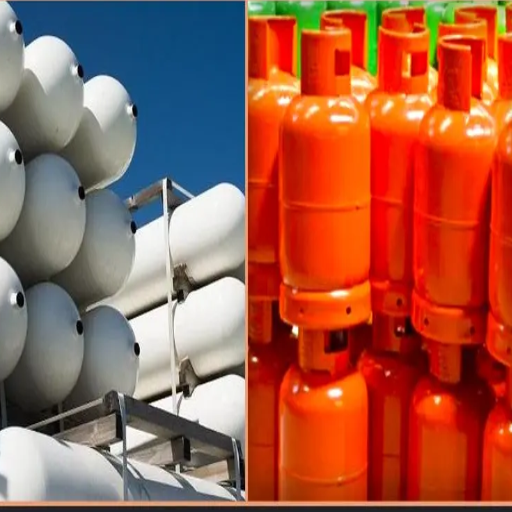
Efficiency: Both fuels offer higher fuel efficiency than conventional fossil fuels. While LPG is suited for long distances, CNG performs well in urban settings.
Environmental Impact: CNG takes the lead in reducing health-damaging emissions, thus making it the clean alternative for daily commuting.
Infrastructure: LPG enjoys better storage and handling benefits, whereas CNG relies heavily on dedicated refueling stations.
Application: Heavy-duty vehicles perform better on LPG, while CNG is suitable for smaller vehicles and local routes due to its accessibility and environmental friendliness.
Sustainability: Both fuels are perhaps the most significant steps toward reducing the carbon footprint of the automotive sector.
Future Trends in LPG and CNG Usage
My take on LPG and CNG as energy sources is that their future lies in further integration with sustainable energy techniques. Accessibility will likely be achieved through advancements in storage technologies and the expansion of suitable refueling infrastructure for optional adoption. Thus, any advancements in the CNG and LPG supply chains, such as fuel efficiency and emission reduction technologies, are bound to make these fuels enticing to consumers and industries. With the push towards sustainability and carbon footprint reduction becoming important among governments and NGOs, the fuels would serve as one of the leading players steering the course to cleaner energy options.
Final Thoughts on LPG vs CNG
Both LPG and CNG offer numerous benefits as the world transitions to sustainable energy alternatives. LPG, a byproduct of natural gas processing and crude oil refining, enables its use in various scenarios, including residential, industrial, and transportation applications. It enjoys widespread availability and has a high energy content per unit, making it an efficient and inexpensive choice for consumers. Studies suggest that LPG emits approximately 20% less GHG than oil-based fuels; therefore, it is a more environmentally friendly option for reducing carbon footprints.
Being almost pure methane, CNG is, in fact, a much cleaner fuel. CNG vehicles emit far fewer emissions of particulate matter, nitrogen oxides, and carbon dioxide than their gasoline or diesel counterparts, among others. For instance, it has been found that carbon monoxide emissions from the considered pollutants can be reduced by up to 90 percent through the use of CNG. In contrast, nitrogen oxide emissions can be reduced by 60 percent. These environmental advantages have been further augmented by the increasing use of bio-CNG, which is produced from organic waste, positioning CNG as a future-proof solution geared toward global decarbonization.
LPG or CNG: which one are you going to choose? This depends on the particular use case, infrastructure availability, and regional energy policies. While LPG offers versatility and immediate scalability, CNG, with its long-term potential for ultra-low emission performance, excels in those transportation applications where emission reductions are of the highest priority. Both fuels, however, are essential bridging energy sources, providing a balance toward renewable energy and reducing dependence on traditional fossil fuels.
Reference Sources
Ecological Aspects of Natural Gas Use
Influence of Electric Vehicle Uptake on Climate Change
Frequently Asked Questions (FAQs)
What is the difference between CNG and LPG?
The primary difference between CNG and LPG lies in their composition and storage methods. CNG, or Compressed Natural Gas, is composed mainly of methane and is stored at high pressure. In contrast, LPG, or liquefied petroleum gas, is a mixture of propane and butane. While CNG is gaseous at standard temperature and pressure, LPG is stored in liquid form at lower pressures, making it easier to transport.
How does using CNG compare to using LPG as a fuel?
Using CNG as a fuel generally provides a cleaner alternative to LPG and other traditional fuels. CNG is typically less expensive than LPG, resulting in lower operational costs. Additionally, CNG combustion results in fewer greenhouse gases and other pollutants compared to LPG, making it a more environmentally friendly option. However, the choice between LPG and CNG will depend on vehicle compatibility and availability.
What are the environmental impacts of LPG and CNG?
The environmental impact of LPG and CNG varies significantly. CNG is generally considered to have a lower environmental impact due to its cleaner combustion profile. It produces fewer flammable gases and contributes less to urban air pollution compared to LPG. Conversely, LPG combustion can generate higher levels of greenhouse gases and other pollutants, although it is still considered a cleaner alternative to traditional gasoline or diesel fuels.
Are CNG vehicles more cost-effective compared to LPG vehicles?
CNG vehicles can be more cost-effective than LPG vehicles due to the lower cost per unit of CNG. Additionally, the cost of CNG is typically lower than that of LPG, resulting in lower fuel expenses over time. However, the initial investment in CNG vehicles may be higher, which can affect the overall cost-effectiveness depending on usage and local fuel prices.
How is CNG sourced and produced?
CNG is sourced from natural gas wells, where it is extracted from natural gas streams. After extraction, the gas undergoes compression and is transported through pipelines. This process makes CNG a reliable and efficient fuel source, suitable for various applications, including powering vehicles and industrial uses.
What is the cost per unit for CNG compared to LPG?
The cost per unit for CNG is generally lower than that of LPG, making it a more economical choice for many consumers. Prices can fluctuate based on market conditions, but CNG typically offers a lower cost per gallon for users who rely on it as their primary fuel source. This cost advantage can significantly impact the overall fuel budget for both fleet operators and individual users.
Can LPG be used as an alternative to CNG?
Yes, LPG can be used as an alternative to CNG, particularly in areas where CNG infrastructure is lacking. LPG is a versatile fuel, primarily composed of propane and butane, and can be used in various applications, including heating and cooking. However, users should consider the differences in environmental impact and fuel efficiency when choosing between LPG and CNG.
What are the safety considerations for using CNG and LPG?
Both CNG and LPG are flammable and require careful handling to prevent gas leaks. It is essential to ensure that storage tanks and pipelines are well-maintained and regularly inspected. In the event of a gas leak, proper ventilation and immediate evacuation of the area are essential. Overall, both fuels can be used safely when appropriate safety measures are followed.

